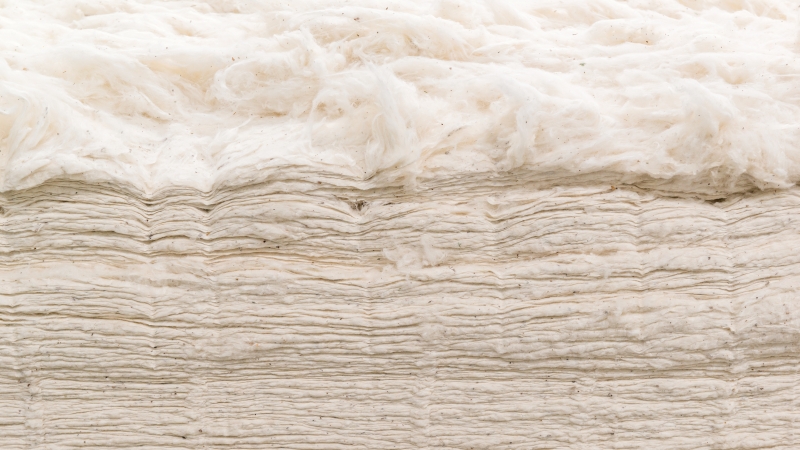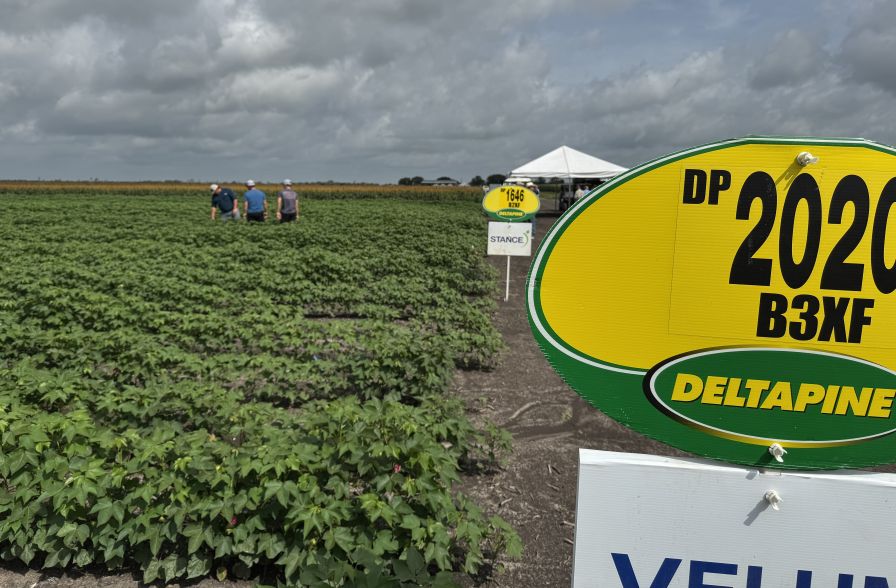Textile Machinery Rebounds in 2010, ITMF Study Shows
 Some sectors of the cotton and textile industries are still struggling through the fallout of a global recession, but not shipments of textile machinery. All segments experienced a significant recovery in 2010, according to the International Textile Manufacturers Federation (ITMF).
Some sectors of the cotton and textile industries are still struggling through the fallout of a global recession, but not shipments of textile machinery. All segments experienced a significant recovery in 2010, according to the International Textile Manufacturers Federation (ITMF).
Following a strong investment boom that reached its peak in 2007, shipments of new textile machinery were in strong decline in 2008-2009. But in 2010, global shipments of new textile machinery recorded a very strong upswing. Year-over-year, 2010’s global shipments of new spinning machinery vs. 2009 show gains of:
• 75 percent for short-staple spindles
• 163 percent for long-staple spindles
• 212 percent for open-end rotors
• 132 percent for texturing spindles of weaving machinery
• 146 percent for shuttle-less looms
• 36 percent for large circular knitting machines
• 187 percent for electronic flat knitting machines
Virtually all of those figures represent new record highs for the sector.
Those are the high-level results of the ITMF’s 33rd annual International Textile Machinery Shipment Statistics (ITMSS), released on May 25. The report covers six types of textile machinery: spinning, texturing, weaving, large circular knitting, flat knitting, and finishing machinery. The 2010 survey has been compiled in cooperation with 115 textile machinery manufacturers, representing a comprehensive measure of world production.
Spinning machinery
Following a considerable drops in shipments of short-staple spindles in 2008 (33 percent) and 2009 (17 percent), shipments in 2010 rose 75 percent to 12.5 million spindles. This came close to the record set in 2007, when 12.8 million were shipped. By far the largest part of this new machinery was destined for Asia (11.9 million/96 percent). China absorbed 7.9 million (63 percent) of global shipments, followed by India (2.4 million/19 percent), Indonesia (500,000/4 percent), Bangladesh (400,000/3.2 percent) and Turkey (300,000/2.4 percent).
Global shipments of long-staple (wool) spindles increased 163 percent in 2010, to 84,000. Shipments to Asia jumped by 99 percent to 33,400, to Europe (including Turkey) by 263 percent to 38,400, and to South America by 139 percent to 11,000. Unlike in 2009, there were shipments to North America in 2010 (1,150). As in 2009, Africa did not receive any long-staple (wool) spindles in 2010.
Investments in open-end rotors jumped in 2010 by 212 percent to 450,000 after they plummeted in 2008 by 66 percent to 195,650 and in 2009 by 26 percent to merely 144,500. With 374,000 rotors (83 percent), Asia was once more the main recipient of open-end rotors in 2010. China’s global share reached 72 percent (323,000), followed by Brazil as a distant second with 5.5 percent (24,800), India with 5.5 percent (24,600), the United States with 4.7 percent (21,100), and Turkey with 2.3 percent (10,400).
Texturing machinery
Shipments of single heater draw-texturing spindles (for polyamide filaments) soared in 2010 from 2,880 to 63,240, an increase of 2,095 percent. China was the largest investor in this type of machinery with a global share of 71 percent (44,700 spindles), followed by Brazil (21 percent/13,500), Belarus (3,000/4.7 percent) and Taiwan (1,728/2.7 percent).
The amount of shipped double heater draw-texturing spindles (for polyester filament) sky-rocketed from 248,000 to 518,000, an increase of 109 percent. This amount surpassed by large margin the old record highs of 2004 (406,000) and 2005 (315,000). By far the biggest investor once again was China with 365,000 new spindles (71 percent of global investment) followed by India with 54,000/10 percent, Vietnam with 20,600/4 percent, Thailand with 13,200/2.5 percent, Japan with 12,200/2.4 percent, Turkey with 7,000/1.4 percent, and Brazil with 6,200/1.2 percent.
Weaving Machinery
After having recorded the lowest amount of shipped shuttle-less looms in 2009 (43,400) since the year 2000–when shipments of Chinese textile machinery manufacturers were included for the first time in this survey–worldwide investments in shuttle-less looms jumped in 2010 by 146 percent to a new record of 107,000 machines. While in the segment of rapier/projectile looms decreased by 32 percent to 16,000 machines, the segment of air-jet looms jumped by 110 percent to 17,700 machines, and the segment of water-jet looms skyrocketed by 537 percent to 73,300 machines. This significant increase in shipments of shuttle-less looms was the result of both more investment as well as more reporting companies.
About 97 percent of all machines were destined for Asia. China was again by far the biggest recipient of shuttle-less looms, having installed 89,400 (84 percent of total shipments in 2010). Of the total amount, 6,800 machines were rapier/projectile looms (down 31 percent compared to 2009), 12,900 air-jet looms (up 112 percent) and 69,700 water-jet looms (up 617 percent). With 5,400 shuttle-less looms/5 percent market share, India was distant second, followed by Indonesia with 2,400/2.2 percent, Bangladesh with 2,300/2.1 percent and Korea with 1,000/0.9 percent.
Circular & Flat Knitting Machinery
The segment of circular knitting machines recorded an increase of 36 percent (to 34,500) over 2009. This marked the highest investment level since 2000. The previous record of 30,500 was recorded in 2005. With 92 percent, Asia was the preferred region of investments in circular knitting machines. As in the other segments, the biggest investor in this type of knitting machinery was China, with 26,400 (77 percent of global shipments). India was the second biggest investor in 2010 with 1,370 machines/4 percent of global shipments, followed by Bangladesh with 1,330 machines/3.8 percent, Turkey with 1,000/2.9 percent, and Brazil with 860/2.5 percent.
In the segment of electronic flat knitting machines, global shipments in 2010 jumped by 187 percent to 51,130. This jump in shipments has two main reasons:
1. a booming Chinese market
2. more textile machinery companies participating in the survey.
The bulk of shipments went to Asia (94 percent), with Europe (including Turkey) absorbing 3.9 percent. Once more, China was the biggest single investor in electronic flat knitting machines, investing in 37,800 machines (74 percent), followed by Bangladesh 4,960/9.7 percent, Hong Kong with 2,760/5.4 percent, Turkey with 1,350/2.6 percent, and Cambodia with 790/1.5 percent.









